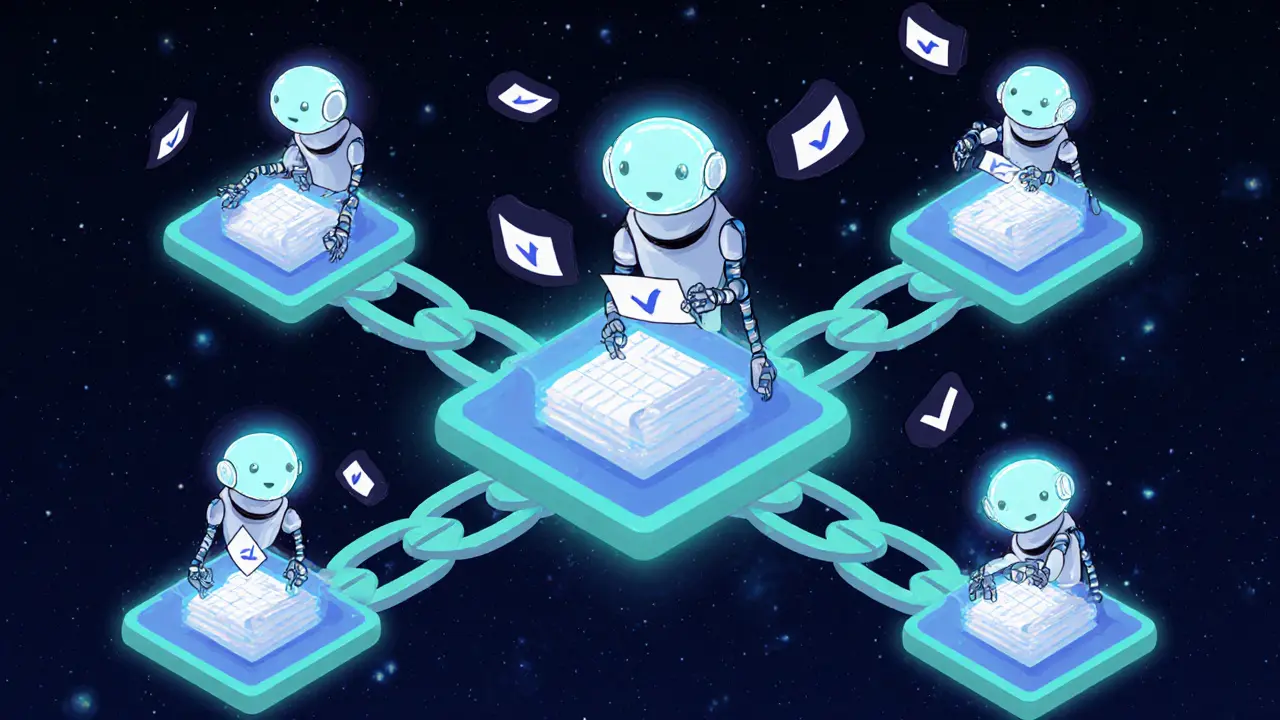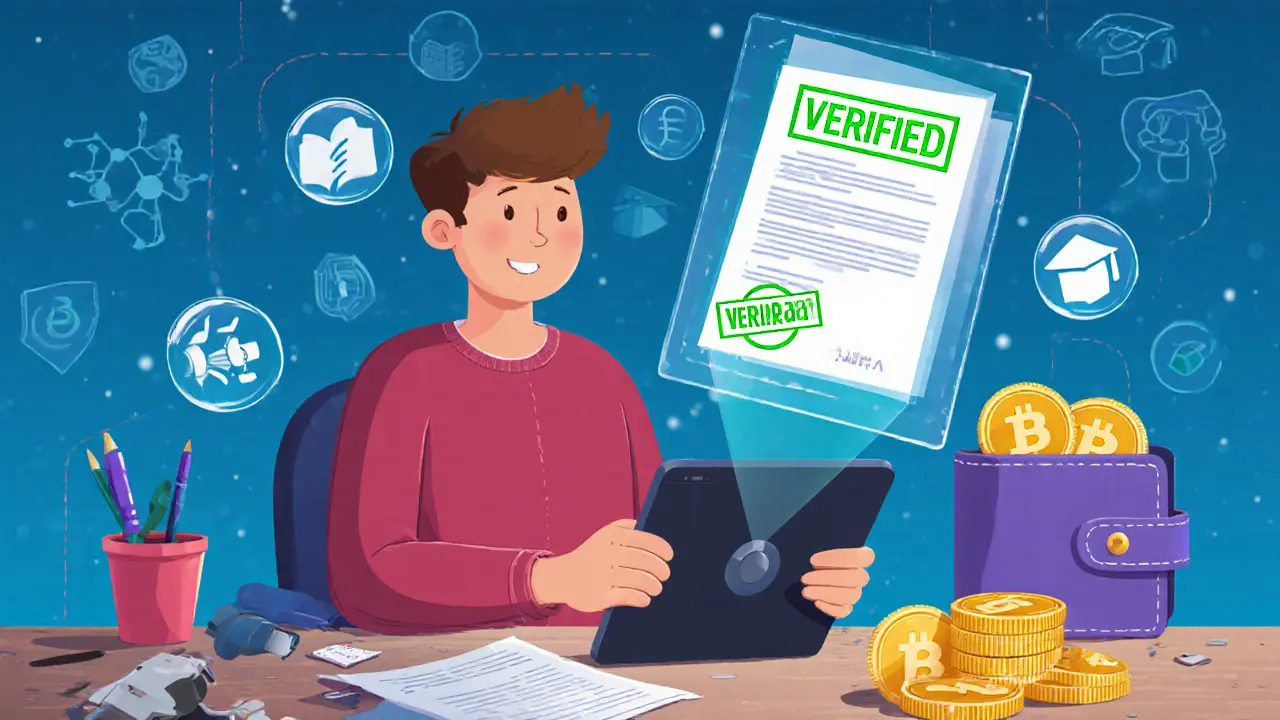
- 6 Sep 2025
- Elara Crowthorne
- 0
AI Verification Cost Calculator
Verify AI Outputs with MIRA
Estimate verification costs for your AI projects using the MIRA network. Calculate savings compared to manual verification.
Total Cost
Savings Comparison
Manual verification costs $0.15 per request (avg. industry rate). With MIRA:
When you ask an AI for medical advice, legal reasoning, or financial forecasts, how do you know it’s not making things up? That’s the problem Mira (MIRA) was built to solve. Unlike most crypto coins that trade on hype or speculation, MIRA is a utility token designed to make AI outputs trustworthy - without needing a human to double-check every answer.
What Exactly Is Mira (MIRA)?
Mira (MIRA) is a cryptocurrency built on the Base blockchain as an ERC-20 token. It’s not just another altcoin. It’s the economic fuel for a decentralized network that verifies AI-generated content in real time. Think of it like a fact-checking layer for artificial intelligence - but automated, transparent, and secured by blockchain.
The Mira Network, which launched in early 2025, connects multiple AI models - including OpenAI, Anthropic, and others - into a consensus system. Instead of relying on one AI to give you an answer, the network asks several models to respond, then uses blockchain-based voting to determine the most accurate, reliable output. If 8 out of 10 models agree on a medical diagnosis, the network locks that answer as verified. No humans needed.
The result? A 95%+ accuracy rate for AI responses through its Verified Generate API. That’s far beyond what even the best standalone models achieve today, where hallucinations and false citations are common. Developers using this API can now build AI tools for healthcare, law, finance, and education without worrying about legal liability from bad outputs.
How Does MIRA Work as a Token?
MIRA isn’t just a symbol on a chart. It has four real, working roles inside the network:
- Payment for AI services - Developers pay in MIRA to access the Verified Generate API or other tools in the ecosystem.
- Staking for security - Users can lock up MIRA tokens to run verification nodes. In return, they earn rewards when the network successfully validates AI outputs.
- Governance voting - Token holders vote on protocol upgrades, fee structures, and which AI models get added to the network.
- Access control - Some advanced features, like private data verification or custom model training, require holding a minimum amount of MIRA.
The total supply of MIRA is capped at 1 billion tokens. As of October 2025, around 220 million are in circulation, with a market cap of $130 million and a price of roughly $0.593 per token. The fully diluted valuation (if all tokens were released) sits at $637 million - showing strong investor belief in long-term demand.
Who Backs Mira? The Investors Behind the Tech
Mira didn’t launch with a tweet and a whitepaper. It raised $9.85 million across multiple funding rounds, backed by some of the most respected names in crypto and AI:
- Balaji Srinivasan - Former CTO of Coinbase, a long-time advocate for decentralized systems and AI.
- Sandeep Nailwal - Co-founder of Polygon, bringing blockchain scalability expertise.
- Alex Svanevik - CEO of Nansen, a leading on-chain analytics firm.
- Framework Ventures and Mechanism Capital - Institutional investors focused on crypto infrastructure.
This isn’t a team of speculators. These are builders who understand the gap between AI’s potential and its real-world reliability. Their involvement signals that MIRA is being treated like critical infrastructure - not a meme coin.

Real-World Use Cases: It’s Not Just Trading
Over 1 million users are already interacting with applications built on the Mira network. Two standout examples:
- Klok - A legal assistant app that uses MIRA to verify contract clauses, case law references, and compliance language. Lawyers can now generate draft documents with confidence, knowing the citations are accurate.
- Learnrite - An AI tutor for students that cross-checks answers against verified knowledge graphs. No more students learning false historical dates or wrong math formulas from AI.
These aren’t experiments. They’re live tools used daily by professionals and students. The network’s ability to verify outputs across domains - from medical summaries to tax code interpretations - makes it uniquely valuable.
Market Performance and Trading Activity
MIRA is listed on 12 major exchanges, including Binance, Upbit, Bitget, and Huobi Global. The most traded pair is MIRA/USDT, which accounts for 60% of total volume.
Trading volume spiked dramatically in late September 2025, jumping over 9,700% in 24 hours after Binance announced the listing. The price surged from $1.22 to $2.68 - then pulled back as early airdrop recipients cashed out. As of mid-November 2025, MIRA is trading around $0.59, with steady gains over the past 30 days (+28.9%).
Despite the volatility, the underlying demand hasn’t faded. The network’s API usage continues to grow, and developer integrations are increasing month over month. This suggests the price movement is being driven by speculation in the short term, but real utility is building long-term value.

Watch Out: There’s Another MIRA Token
Here’s a critical warning: there’s another token using the same ticker - MIRA - but it’s on Solana. This version is a meme coin with no connection to AI verification. It trades at $0.000247, has a tiny market cap, and is tied to charity campaigns. It’s a completely different project.
If you’re looking to buy the AI verification token, you must check the contract address. The real MIRA runs on Base (Ethereum L2) with the contract address starting with 0x4F... (verified on Etherscan). The Solana version has a completely different address and no technical overlap.
Confusing the two could cost you. Always verify the blockchain, contract address, and project website before buying.
Why MIRA Stands Out in the AI Crypto Space
There are dozens of AI-themed crypto projects right now. Some focus on selling compute power. Others sell datasets. MIRA is different because it solves the trust problem.
AI models are getting smarter, but they’re still prone to inventing facts. That’s a dealbreaker for industries that can’t afford errors. MIRA doesn’t just make AI faster - it makes it safe. And that’s why it’s gaining adoption in regulated sectors where compliance matters more than hype.
It’s also building the infrastructure for autonomous AI agents - software bots that can act on your behalf, like scheduling appointments, filing taxes, or negotiating contracts. For those bots to work safely, they need a trusted verification layer. MIRA is becoming that layer.
What’s Next for Mira?
The roadmap includes:
- Expanding verification to multi-chain environments (Solana, Polygon, Arbitrum).
- Launching a decentralized data marketplace where users can sell verified datasets.
- Integrating with more enterprise AI tools like Salesforce Einstein and Google Vertex AI.
- Developing AI agent memory systems that learn from verified outputs over time.
Regulation will be a key factor. If governments start requiring AI-generated content to be verifiable - especially in healthcare or finance - MIRA could become mandatory infrastructure, not just an option.
For now, it’s still early. But if you’re looking for a crypto project that’s solving a real, urgent problem - not just riding a trend - MIRA is one of the few with the tech, the team, and the traction to make it count.
